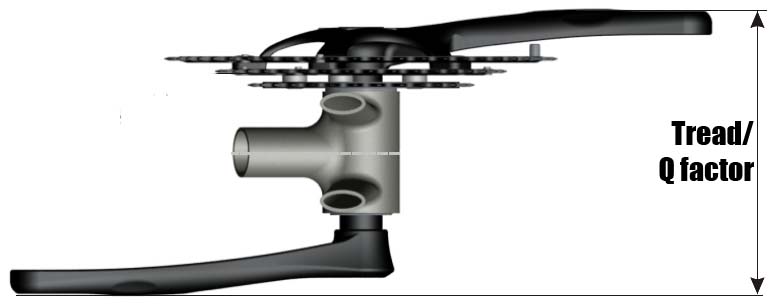Sheldon Brown's
Bicycle Glossary Q

|
![]()

![]()
![]()
 An obsolete Sturmey-Archer shift lever that mounted on the top tube of the frame. Supplanted by the handlebar-mounted trigger shifter sometime before WWII.
An obsolete Sturmey-Archer shift lever that mounted on the top tube of the frame. Supplanted by the handlebar-mounted trigger shifter sometime before WWII.When quick-release wheels started being supplied on bicycles intended for the general consumer market, ignorant users caused a rash of accidents due to front wheels falling off. The resulting lawsuits led to the addition of "lawyer lips" to most front forks, greatly reducing the convenience of quick-release wheels.
It is important to realize that there are good and bad quick-release mechanisms, and the bad ones outnumber the good ones!
See my Article on Quick-Release Skewers for details on this.
Recently there have been concerns about the safety of front disc brakes, in conjunction with lightweight quick-release skewers. See James Annan's article on this topic.
Some brake quick releases are located in the brake levers, the best place for them. This type of quick release allows the brakes to work normally even if the user forgets to reset them after use.
Other quick releases are located at the caliper or on the cable hanger. These must be manually reset after use, or the brakes may run out of travel. The better caliper-mounted QR's feature a cam which allows a variable setting. This is of use to racers who may knock a wheel out of true, because they can temporarily loosen the QR as much as it takes to get the bent wheel to clear the brake shoes.
![]()
![]()
This feature was carried over when mountain bikes made it into the mass market. Naive bicycle buyers think that a quick-release seatpost is a nifty feature, but it is actually much more trouble than it is worth for most cyclists. In particular, it is very undesirable for urban cyclists, because it has made it necessary to worry about having your saddle and seatpost stolen, a crime that was virtually unknown before the advent of quick-release seatposts.
In the mid 1980's there were also seatposts with quick-release saddle clamps, which allowed the saddle to be moved back and forth over a considerable range. This turned out to be a solution in search of a problem, and was not embraced by the marketplace. Part of the reason for this may be the fact that these seatposts were marketed for mountain-bike use, but were much too short for normally fitted mountain bikes. [But aha, one of these, an SR MTE-100 which I found when helping to clean out Sheldon's basement, was just what I needed to get the saddle back far enough despite the very steep seat-tube angle of my Cannondale Criterium Series road racing bicycle. Never say never! -- John Allen]
![]()
![]()
![]()
![]()
Last Updated: by Harriet Fell